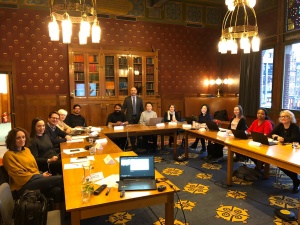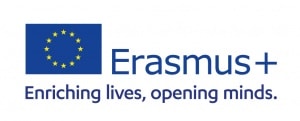Associated countries Vs Associated Partners & Countries with co-funding mechanism
Introduction
Horizon Europe allows international participation through various mechanisms, each with distinct roles and funding rules. This document compares Associated Partners, Associated Countries, and Countries with Co-Funding Mechanisms, outlining how each contributes to EU-funded research and innovation.
By clarifying their differences in eligibility, responsibilities, and funding, this guide helps institutions better understand their options for engaging in Horizon Europe projects.
Associated Countries: List of Participating Countries in Horizon Europe (EC document)
Associated countries in the context of Horizon Europe are non-EU nations that have formal agreements allowing them to participate in the programme under conditions similar to EU Member States. These agreements enable entities from associated countries to engage in Horizon Europe projects and receive funding, unless specific restrictions are outlined in the work programme or call texts.
As of April 10, 2025, the following 19 countries have association agreements with Horizon Europe:
Albania, Armenia, Bosnia and Herzegovina, Canada (associated specifically with Pillar II), Faroe Islands, Georgia, Iceland, Israel, Kosovo, Moldova, Montenegro, New Zealand (associated with Pillar II), North Macedonia, Norway, Serbia, Tunisia, Türkiye, Ukraine and United Kingdom (associated with the entire programme except for the EIC Fund).
Additionally, certain countries are in the process of association negotiations or have transitional arrangements in place, allowing their entities to participate in specific parts of Horizon Europe:
- Egypt
- Morocco
- Republic of Korea
- Switzerland: Applicable to ERC Work Programme 2024 calls opening after March 18, 2024, and to the entire programme for Union budget award procedures from 2025 onwards.
For the Euratom Research and Training Programme, Ukraine has an association agreement in effect, and Switzerland is expected to become associated; until then, transitional arrangements apply.
Other third countries
Participants from the following low- to middle-income countries are automatically eligible for funding:
– Afghanistan, Algeria, Angola, Argentina, Azerbaijan
– Bangladesh, Belarus, Belize, Benin, Bhutan, Bolivia, Botswana, Burkina Faso, Burundi
– Cabo Verde, Cambodia, Cameroon, Central African Republic, Chad, Colombia, Comoros, Congo (Democratic Republic), Congo (Republic), Costa Rica, Côte d’Ivoire, Cuba
– Djibouti, Dominica, Dominican Republic
– Ecuador, Egypt (Arab Republic), El Salvador, Equatorial Guinea, Eritrea, Eswatini, Ethiopia
– Fiji
– Gabon, Gambia, Ghana, Grenada, Guatemala, Guinea, Guinea-Bissau, Guyana
– Haiti, Honduras
– Indonesia, Iran (Islamic Republic), Iraq
– Jamaica, Jordan
– Kazakhstan, Kenya, Kiribati, Korea (Democratic People’s Republic), Kyrgyz Republic
– Lao (People’s Democratic Republic), Lebanon, Lesotho, Liberia, Libya
– Madagascar, Malawi, Malaysia, Maldives, Mali, Marshall Islands, Mauritania, Mauritius, Micronesia (Federated States), Mongolia, Morocco, Mozambique, Myanmar
– Namibia, Nepal, Nicaragua, Niger, Nigeria
– Pakistan, Palestine, Papua New Guinea, Paraguay, Peru, Philippines
– Rwanda
– Samoa, São Tomé and Principe, Senegal, Sierra Leone, Solomon Islands, Somalia, South Africa, South Sudan, Sri Lanka, St. Lucia, St. Vincent and the Grenadines, Sudan, Suriname, Syrian Arab Republic
– Tajikistan, Tanzania, Thailand, Timor-Leste, Togo, Tonga, Turkmenistan, Tuvalu
– Uganda, Uzbekistan
– Vanuatu, Venezuela (Bolivarian Republic), Vietnam
– Yemen Republic
– Zambia, Zimbabwe.
Associated Partners
These entities are distinctly different from beneficiaries in several key aspects, especially concerning funding and contractual obligations.
Who Are Associated Partners?
Associated partners are legal entities that actively contribute to the implementation of an EU-funded action but do not receive EU funding. They are not signatories to the Grant Agreement and, as such, are not considered beneficiaries. However, they are formally identified in the Grant Agreement (specifically in Article 9.1 and Annex 1), and their tasks within the action are explicitly outlined.
These partners may choose to participate for several reasons:
- Interest in supporting the action’s objectives
- Gaining visibility within the EU R&I landscape
- Existing R&D collaboration with a beneficiary
Entities that are either ineligible for funding or voluntarily opt out of receiving funds can participate in this capacity.
Key Characteristics of Associated Partners
- No Accession to the Grant Agreement: Associated partners do not sign the Grant Agreement and therefore do not attain the status of a beneficiary.
- Participation Without EU Funding: All costs incurred by associated partners are not eligible for reimbursement under the action.
- Task Attribution: The specific tasks assigned to associated partners must be detailed in Annex 1 of the Grant Agreement.
- Named Participants: Associated partners must be explicitly listed in Article 9.1 of the Grant Agreement.
Responsibilities and Obligations
Although associated partners are not beneficiaries, they are still subject to a set of obligations. The beneficiaries are ultimately accountable to the granting authority for ensuring that associated partners fulfill these responsibilities. This includes:
- Proper Implementation of Tasks (Article 11) – In line with the project’s objectives, schedule, and quality standards.
- Avoiding Conflicts of Interest (Article 12)
- Maintaining Confidentiality and Ensuring Security (Article 13)
- Adhering to Ethical Standards (Article 14)
- Acknowledging EU Funding in Dissemination (Article 17.2) – Even though associated partners do not receive funding, they must contribute to EU visibility efforts.
- Complying with Specific Rules of Action Implementation (Article 18) – Including any conditions outlined in Annex 5, such as open access to peer-reviewed scientific publications.
- Providing Information and Ensuring Transparency (Article 19)
- Record-Keeping and Documentation (Article 20) – Associated partners must maintain records that may be reviewed by oversight bodies.
Oversight and Accountability
The beneficiaries are responsible for ensuring that associated partners comply with all applicable obligations. This is typically achieved through contractual arrangements, such as the consortium agreement.
Moreover, the European Commission, the European Court of Auditors (ECA), and the European Anti-Fraud Office (OLAF) must have the right to conduct audits, checks, reviews, and investigations concerning the associated partners and their involvement in the action.
Important Restrictions
- Associated partners cannot coordinate the action. Coordination tasks cannot be outsourced to associated partners or any external entities.
- Costs incurred by associated partners are not eligible and cannot be claimed under the Grant Agreement.
Countries with co-funding mechanism: HE Complementary funding mechanisms in third countries (EC document)
The Third Countries Mechanism allows non-EU countries (that are not formally associated with Horizon Europe) to participate in EU-funded research and innovation projects, even though they are not eligible for direct EU funding.
To support their participation, these countries have established national co-funding schemes that complement Horizon Europe by covering the costs of their entities involved in projects.
Key Characteristics of the Third Countries Mechanism
- Designed for non-associated third countries.
- Enables participation in Horizon Europe through complementary national funding.
- Usually facilitated by the country’s research councils, ministries, or innovation agencies.
- Requires coordination between the national authority and the project consortium.
- Co-funding schemes may be open to all themes or target specific sectors.
- Encourages international collaboration in R&I aligned with national priorities.
List of Countries with Complementary Funding Mechanisms
Below are the countries that have implemented or are planning to implement such co-funding mechanisms:
| Argentina | Ministry of Science, Technology and Innovation (MINCyT) |
| Australia | Department of Education; Australian Research Council (ARC) |
| Brazil | CONFAP and other local funding organizations |
| Canada | National Research Council Canada (NRC) – only for non-associated calls |
| China | Ministry of Science and Technology (MOST) |
| India | Department of Science and Technology (DST), DBT, MoES, etc. |
| Japan | Japan Science and Technology Agency (JST) |
| Mexico | National Council of Science and Technology (CONACYT) |
| New Zealand | Ministry of Business, Innovation & Employment (MBIE) |
| Republic of Korea | National Research Foundation (NRF) |
| Russia | Russian Foundation for Basic Research (RFBR) (Note: Subject to EU restrictions) |
| Singapore | Agency for Science, Technology and Research (A*STAR) |
| South Africa | Department of Science and Innovation (DSI) |
| Switzerland | State Secretariat for Education, Research and Innovation (SERI) – transitional measures until association finalization |
| Taiwan | Ministry of Science and Technology (MOST) |
| United States | National Science Foundation (NSF), National Institutes of Health (NIH), Department of Energy (DoE), etc. |
These complementary funding mechanisms allow entities in non-associated countries to remain active in Horizon Europe by using national funds. This model encourages global cooperation and promotes strategic alignment of national R&I with EU priorities.
Here’s a clear comparison of the difference between Associated Partners and Countries with Co-Funding Mechanisms in the context of Horizon Europe:
The difference between associated partners and countries with co-funding mechanism
🟠 Associated Partners:
Legal entities (often from within or outside the EU) that contribute to the implementation of Horizon Europe actions without receiving EU funding.
Key Features:
- Not signatories to the Grant Agreement.
- Formally named in the Grant Agreement (Article 9.1 and Annex 1).
- Participate at their own cost (no EU reimbursement).
- Cannot coordinate the action or claim eligible costs.
- Their responsibilities must be managed by the beneficiaries.
- Bound by rules on ethics, confidentiality, reporting, visibility, etc.
- Participation is usually based on existing collaboration or strategic interest.
🟢 Countries with Co-Funding Mechanisms
Non-associated third countries that support their researchers’ participation in Horizon Europe through national co-funding schemes (instead of receiving EU funds directly).
Key Features:
- Not formally associated with Horizon Europe.
- National agencies cover costs of participation in Horizon Europe projects.
- Often organized by ministries, research councils, or national innovation agencies.
- Requires coordination between the country’s authority and project coordinators.
- Mechanisms can be broad or topic-specific.
- Encourages international cooperation while maintaining national research priorities.
✅ Key Difference at a Glance
| Feature | Associated Partners | Countries with Co-Funding Mechanisms |
| EU Funding | ❌ Not eligible | ❌ Not eligible from EU, but ✅ funded by their own country |
| Sign Grant Agreement? | ❌ No | ❌ No |
| Participation Mode | Entity-based | Country-led mechanisms |
| Cost Coverage | At their own expense | Via national funding schemes |
| Listed in Grant Agreement? | ✅ Yes (Annex 1 & Art. 9.1) | ❌ No |
| Responsibilities Managed By | Beneficiary | National institutions / applicants |
| Can Coordinate Action? | ❌ No | ✅ If funded nationally and allowed in call |
Conclusion
While Associated Partners contribute to actions without EU funding, Associated Countries benefit from full or partial access to the programme through formal agreements. Meanwhile, Countries with Co-Funding Mechanisms support participation using national resources.
Understanding these distinctions is essential for developing effective collaboration strategies within EU projects. Clear planning, appropriate legal arrangements, and awareness of each country’s participation framework enable stronger, more inclusive research and innovation partnerships across Europe and beyond.




